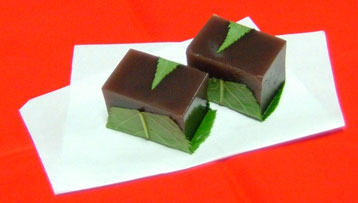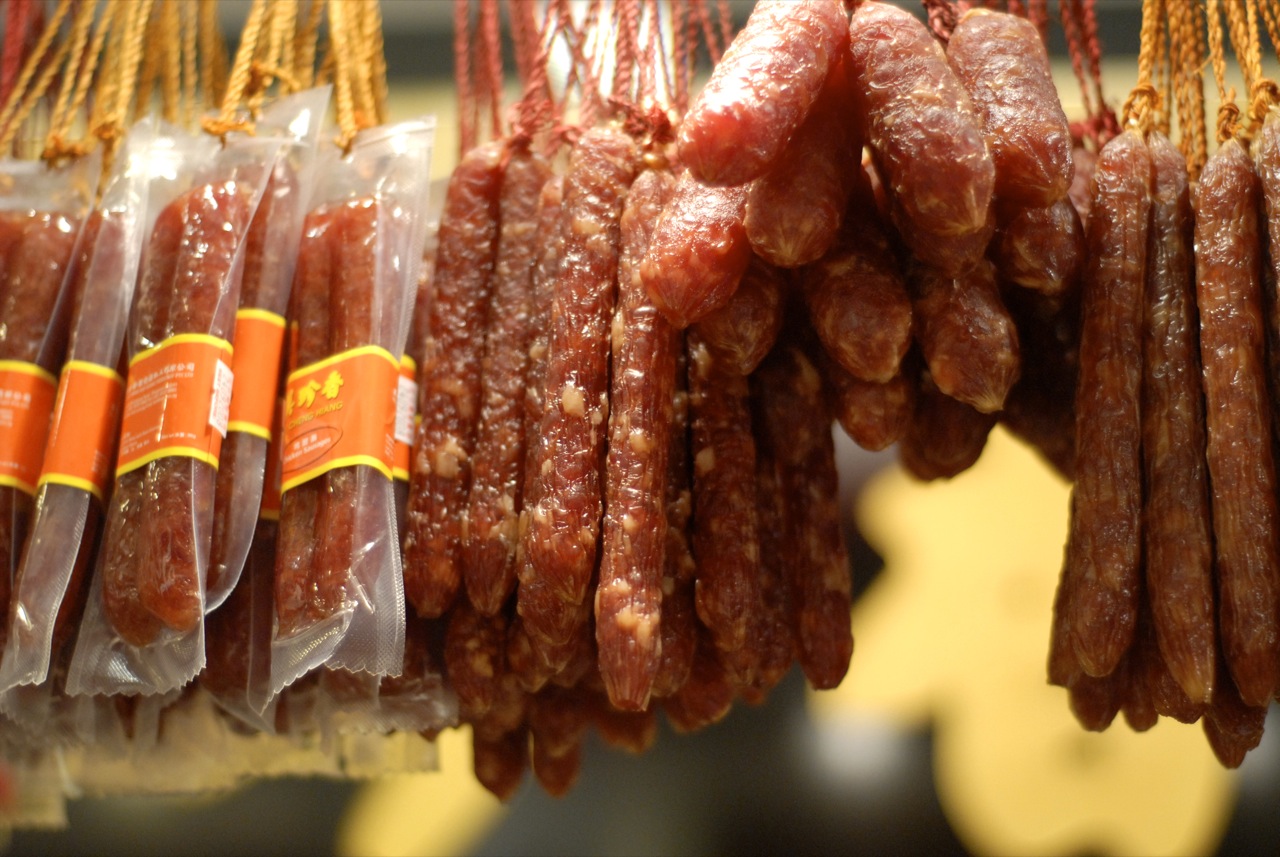|
Eight Treasures Duck
Eight treasure duck (; Shanghainese: ''paq7-pau5-aq7'', ), also known as eight treasures duck, is a Duck as food, duck dish in Shanghai cuisine, Shanghai and Cantonese cuisine, Cantonese cuisine. Its name derives from the fact that it is stuffed with eight other ingredients, including rice, mushrooms and shrimp. Cantonese version The Cantonese version features a duck stuffed with eight stir-fried ingredients, including glutinous rice, diced mushrooms, water chestnuts, Lotus seed, lotus seeds, Chinese sausage, dried shrimp, Bamboo shoot, bamboo shoots, Jujube, jujubes, Salted duck egg, salted egg yolk, Jinhua ham, Adzuki bean, red beans, barley, dried lily, and Peanut, peanuts. Before the duck is stuffed, the duck is marinated overnight in dark soy sauce, spices, and Shaoxing wine. The duck skin is then tightened with hot oil ladled over the duck. After the duck is stuffed, it is cooked in a chicken and soy broth for over an hour, which produces tender and succulent meat. It beca ... [...More Info...] [...Related Items...] OR: [Wikipedia] [Google] [Baidu] |
Duck As Food
In cooking and gastronomy, duck or duckling is the meat of several species of bird in the family Anatidae, found in both fresh and salt water. Duck is eaten in many cuisines around the world. It is a high- fat, high-protein meat rich in iron. Duckling nominally comes from a juvenile animal, but may be simply a menu name. One species of freshwater duck, the mallard, has been domesticated and is a common livestock bird in many cultures. The Pekin duck is another livestock breed of importance, particularly in North America. Magret refers specifically to the breast of a mulard or Muscovy (or Barbary) duck that has been force fed to produce foie gras. Duck meat Duck is particularly predominant in the Chinese cuisine—a popular dish is Peking duck, which is made from the Pekin duck. Duck meat is commonly eaten with scallions, cucumbers and hoisin sauce wrapped in a small spring pancake made of flour and water or a soft, risen bun known as gua bao. In Cantone ... [...More Info...] [...Related Items...] OR: [Wikipedia] [Google] [Baidu] |
Jujube
Jujube (), sometimes jujuba, known by the scientific name ''Ziziphus jujuba'' and also called red date, Chinese date, and Chinese jujube, is a species in the genus '' Ziziphus'' in the buckthorn family Rhamnaceae. Description It is a small deciduous tree or shrub reaching a height of , usually with thorny branches. The leaves are shiny-green, ovate-acute, long and wide, with three conspicuous veins at the base, and a finely toothed margin. The flowers are small, wide, with five inconspicuous yellowish-green petals. The fruit is an edible oval drupe deep; when immature it is smooth-green, with the consistency and taste of an apple with lower acidity, maturing brown to purplish-black, and eventually wrinkled, looking like a small date. There is a single hard kernel, similar to an olive pit, containing two seeds. Chemistry Leaves contain saponin and ziziphin, which suppresses the ability to perceive sweet taste. Flavinoids found in the fruits include Kaempfero ... [...More Info...] [...Related Items...] OR: [Wikipedia] [Google] [Baidu] |
Chinese New Year's Eve
Chinese New Year's Eve (Lunar New Year's Eve) is the day before the Chinese New Year ( Lunar New Year). Celebrating Chinese (Lunar) New Year’s Eve has always been a family matter in Asia, it is the reunion day for every Asian family. It has evolved over a long period of time. The origin of Asian Lunar New Year’s Eve can be traced back to 3500 years ago. History Chinese New Year's Eve originated in the Shang Dynasty (1600 – 1046 BC), when Chinese held sacrificial ceremonies in honour of gods and ancestors at the end of each year. Then in the Zhou Dynasty (1046 – 256 BC), the phrase “Nian (Year)”appeared and certain cultural practices became popular among Chinese such as sending door god, burning bamboo. The first dated Chinese New Year's Eve was recorded during Warring States period (475 BC – 221 AD). In ''Lüshi Chunqiu'', an exorcistic ritual called "Big Nuo" (大傩) was recorded being carried out in the ending day of a year to expel illness in Qin (state). It w ... [...More Info...] [...Related Items...] OR: [Wikipedia] [Google] [Baidu] |
Shaoxing Wine
Shaoxing wine (''Shaohsing'', ''Hsiaohsing'', ''Shaoshing''), also called "yellow wine", is a traditional Chinese wine made by fermenting glutinous rice, water and wheat-based yeast. It must be produced in Shaoxing, in the Zhejiang province of eastern China. It is widely used as both a beverage and a cooking wine in Chinese cuisine. It is internationally well known and renowned throughout mainland China, as well as in Taiwan and Southeast Asia.TVB show Natural Heritage 天賜良源 episode 1 January 30, 2008. Shaoxing wine exclusive The content of peptides in Shaoxing wine is high; however, their potential taste properties have not yet been studied. Production The traditional method involved manually stirring rice mash with a type of wooden hoe every 4 hours, in order to help the yeast break down the sugars evenly. Known as ''kāipá'' ( 开耙), it was an essential skill to produce wines that were not bitter or sour. Another skill of the winemaker would be to assess the fer ... [...More Info...] [...Related Items...] OR: [Wikipedia] [Google] [Baidu] |
Peanut
The peanut (''Arachis hypogaea''), also known as the groundnut, goober (US), pindar (US) or monkey nut (UK), is a legume crop grown mainly for its edible Seed, seeds. It is widely grown in the tropics and subtropics, important to both small and large commercial producers. It is classified as both a grain legume and, due to its high oil content, an oil crop. World annual production of shelled peanuts was 44 million tonnes in 2016, led by China with 38% of the world total. Atypically among legume crop plants, peanut pods develop underground (geocarpy) rather than above ground. With this characteristic in mind, the botanist Carl Linnaeus gave peanuts the specific epithet ''hypogaea'', which means "under the earth." The peanut belongs to the botanical Family (biology), family Fabaceae (or Leguminosae), commonly known as the legume, bean, or pea family. Like most other legumes, peanuts harbor symbiotic Nitrogen fixation, nitrogen-fixing bacteria in root nodules. The capacity to fi ... [...More Info...] [...Related Items...] OR: [Wikipedia] [Google] [Baidu] |
Adzuki Bean
''Vigna angularis'', also known as the adzuki bean , azuki bean, aduki bean, red bean, or red mung bean, is an annual vine widely cultivated throughout East Asia for its small (approximately long) bean. The cultivars most familiar in East Asia have a uniform red color, but there are also white, black, gray, and variously mottled varieties. Scientists presume ''Vigna angularis'' var. ''nipponensis'' is the progenitor. Origin and diversity Speciation and domestication The wild ancestor of cultivated adzuki bean is probably ''Vigna angularis'' var. ''nipponensis'', which is distributed across Japan, Korea, China, Nepal and Bhutan. Speciation between ''Vigna angularis'' var. ''nipponensis'' and ''Vigna angularis'' var. ''angularis'' occurred around years ago. Archaeologists estimate it was domesticated around 3000 BC. However, adzuki beans (as well as soybeans) dating from 3000 BC to 2000 BC are indicated to still be largely within the wild size range. Enlarged seeds occurr ... [...More Info...] [...Related Items...] OR: [Wikipedia] [Google] [Baidu] |
Jinhua Ham
Jinhua ham () is a type of specialty dry-cured ham named after the city of Jinhua, where it is produced, in Zhejiang province, China. The ham is used in Chinese cuisines to flavor stewed and braised foods as well as for making the stocks and broths of many Chinese soups. The ham was awarded first prize in the 1915 Panama International Merchandise Exhibition. Production Jinhua ham is traditionally produced using the hind legs of a breed of pigs native to China known as the "two ends black" (兩頭烏), which have black hair growing on their heads and hindquarters with white midsections. This breed is quick to mature; it has excellent meat quality and thin skin. Ham production begins when air temperatures drops below . The process takes approximately 8 to 10 months to complete. Ham production is separated into six stages, starting in the winter and ending the following autumn: #Meat preparation: Well-developed and undamaged legs are selected and the "open" side of the ... [...More Info...] [...Related Items...] OR: [Wikipedia] [Google] [Baidu] |
Salted Duck Egg
A salted duck egg is an East Asian preserved food product made by soaking duck eggs in brine, or packing each egg in damp, salted charcoal. In Asian supermarkets across the Western world, these eggs are sometimes sold covered in a thick layer of salted charcoal paste. The eggs may also be sold with the salted paste removed, wrapped in plastic, and vacuum packed. From the salt curing process, the salted duck eggs have a briny aroma, a gelatin-like egg white and a firm-textured, round yolk that is bright orange-red in color. Salted duck eggs are normally boiled or steamed before being peeled and eaten as a condiment to '' congee'' or cooked with other foods as a flavoring. The texture is gelatin like egg white and firm and has a perfect round yolk. The egg white has a sharp, salty taste. The orange red yolk is rich, fatty, and less salty. The yolk is prized and is used in Chinese mooncakes to symbolize the moon. Salted eggs can also be made from chicken eggs, though the taste ... [...More Info...] [...Related Items...] OR: [Wikipedia] [Google] [Baidu] |
Bamboo Shoot
Bamboo shoots or bamboo sprouts are the edible shoots (new bamboo culms that come out of the ground) of many bamboo species including ''Bambusa vulgaris'' and ''Phyllostachys edulis''. They are used as vegetables in numerous Asian dishes and broths. They are sold in various processed shapes, and are available in fresh, dried, and canned versions. Raw bamboo shoots contain cyanogenic glycosides, natural toxins also contained in cassava. The toxins must be destroyed by thorough cooking and for this reason fresh bamboo shoots are boiled before being used in other ways. The toxins are also destroyed in the canning process. Harvested species Most young shoots of bamboo are edible after being boiled to remove toxins, but only around a hundred or so species are harvested regularly for edible shoots. These are usually from species that are also cultivated for other uses. These include: *'' Acidosasa'' – native to South China and Vietnam :*'' Acidosasa edulis'' – endemic to th ... [...More Info...] [...Related Items...] OR: [Wikipedia] [Google] [Baidu] |
Shanghai Cuisine
Shanghai cuisine (; Shanghainese: ''zaon⁶ he⁵ tshe¹''; IPA: ɑ̃¹¹ he⁴⁴ tsʰᴇ¹¹, also known as Hu cuisine (; Shanghainese: ''wu⁶ tshe¹''; IPA: �u¹¹ tsʰᴇ⁴⁴, is a popular style of Chinese food. In a narrow sense, Shanghai cuisine refers only to what is traditionally called Benbang cuisine (; ''pen⁵ paon¹ tshe⁵''; 'local cuisine') which originated in Shanghai. In a broader sense, it refers to complex styles of cooking developed under the influence of neighboring Jiangsu and Zhejiang provinces. The dishes within the cuisine needs to master the following three elements "color, aroma and taste" (Chinese: "色香味"). Like other cuisines within China, Shanghai cuisine emphasises the use of seasonings, the quality of raw ingredients, and preserving the original flavors of ingredients. The adoption of Western influence in Shanghai cuisine resulted in a unique cooking style known as Haipai cuisine (海派菜). Characteristic features Shanghai dishes ... [...More Info...] [...Related Items...] OR: [Wikipedia] [Google] [Baidu] |
Dried Shrimp
Dried shrimp are shrimp that have been sun-dried and shrunk to a thumbnail size. They are used in many East Asian, Southeast Asian and South Asian cuisines, imparting a unique umami taste. A handful of shrimp is generally used for dishes. The flavors of this ingredient are released when allowed to simmer. Use East Asia In Chinese cuisine, dried shrimp are used quite frequently for their sweet and unique flavor that is very different from fresh shrimp. They have the coveted umami flavor (or so-called "fifth taste"). It is an ingredient in the Cantonese XO sauce. Dried shrimp are also used in Chinese (mostly Cantonese) soups and braised dishes. It is also featured in Cantonese cuisine, particularly in some dim sum dishes such as rolled and rice noodle roll and in ''zongzi''. Despite the literal meaning of the name Chinese name ''xiā mǐ'' ("shrimp rice"), it has nothing to do with rice other than the fact that the shrimp are shrunk to a tiny size similar to grains of ri ... [...More Info...] [...Related Items...] OR: [Wikipedia] [Google] [Baidu] |
Chinese Sausage
Chinese sausage is a generic term referring to the many different types of sausages originating in China. The southern flavor of Chinese sausage is commonly known by its Cantonese name (or ) (). Varieties There is a choice of fatty or lean sausages. There are different kinds ranging from those made using fresh pork to those made using pig livers, duck livers and even turkey livers. Usually a sausage made with liver will be darker in color than one made without liver. Recently, there have even been countries producing chicken Chinese sausages. Traditionally they are classified into two main types. It is sometimes rolled and steamed in dim sum. * ''Lap cheong'' (Cantonese, or ) is a dried, hard sausage usually made from pork and pork fat. It is normally smoked, sweetened, and seasoned with rose water, rice wine and soy sauce. * ''Yun chang'' () is made using duck liver. * ''Xiang chang'' () is a fresh and plump sausage consisting of coarsely chopped pieces of pork and Renderi ... [...More Info...] [...Related Items...] OR: [Wikipedia] [Google] [Baidu] |










